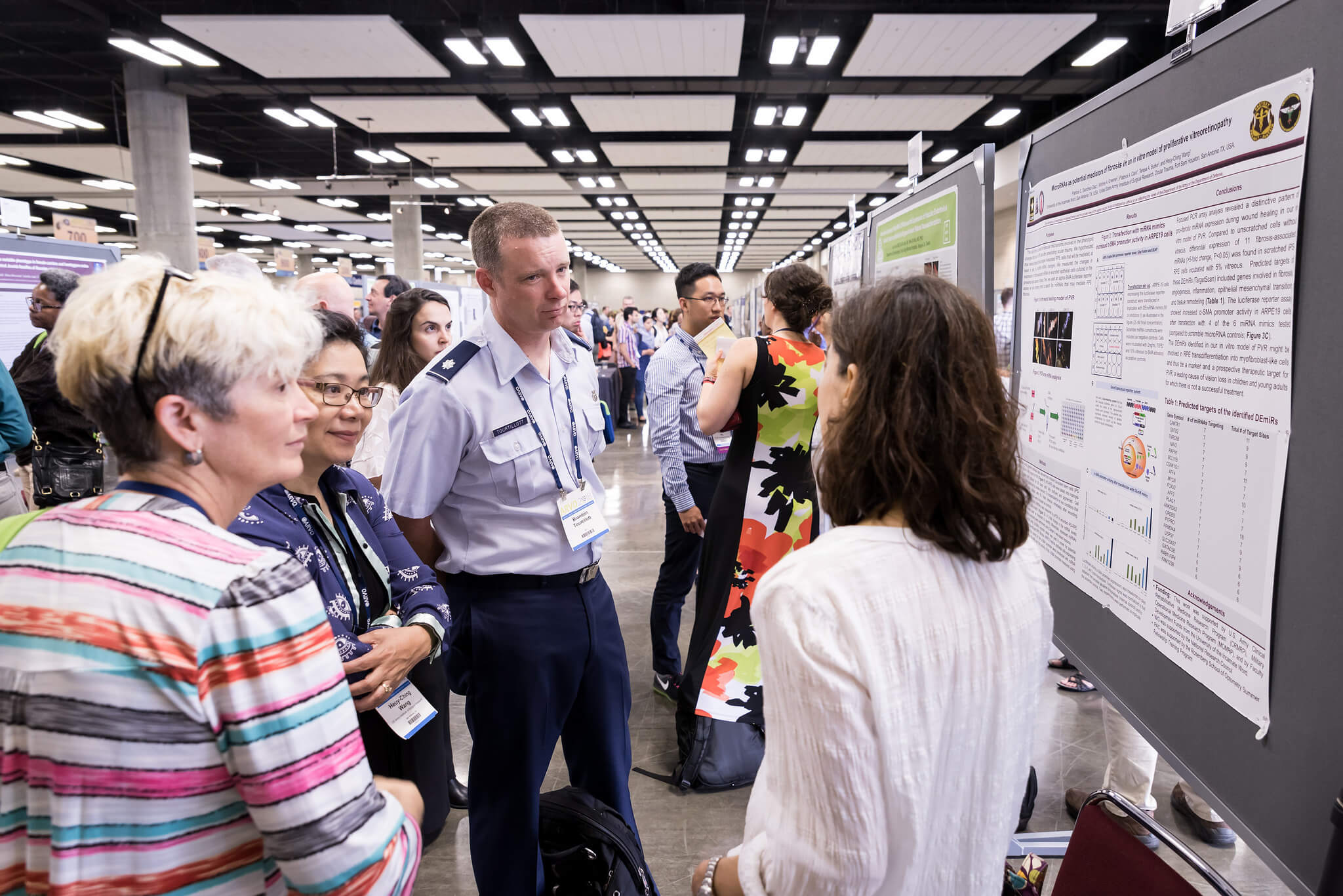Members-in-Training Outstanding Poster Awards

MIT First Authors of the top five (5) scored abstracts scheduled as Poster presentations from each Scientific Section and Cross-sectional Group are eligible for consideration as award recipients and invited to participate in the MIT Outstanding Poster Award Competition held at the ARVO Annual Meeting.
One award recipient is selected from each Scientific Section and Cross-sectional Group. Award recipients are announced at the Closing Keynote Session during the Annual Meeting.
To be eligible for the MIT Outstanding Poster Award
- You must be an ARVO MIT member paid through the current year.
- You must submit an abstract for the current Annual Meeting as First Author.
- As part of your abstract submission process, you must indicate that you want to apply for the MIT Outstanding Poster Award.
- You may apply for the MIT Outstanding Poster Award, a Travel Grant, and the ARVO Foundation Early Career Clinician-Scientist Research Award.
- Your abstract must be accepted for Poster presentation at the current Annual Meeting.
- Your abstract must receive one of the top five (5) review scores given by the reviewing Scientific Section or Cross-sectional Group to MIT First Authors who have applied for the award and whose abstracts have been accepted as Poster presentations.
- Eligibility Acknowledgements will be sent to the First Authors of the top five scores from each Section/Group.
- Eligible First Authors must accept their eligibility and confirm their participation in the session.
- On-demand presenters are not eligible for these awards.
Congratulations to the 2023 awardees
AP Section
Carol Lin
The effect of myopia on retinal string vessels and vascular branchpoint density is exacerbated by age
BI Section
Nicole Tsai
Comprehensive Spatial Transcriptomic Analysis of Mouse Retinal Ganglion Cell Diversity
CL Section
Davide Garzone
Association of genetic risk of age-related macular degeneration with disease stages and endophenotypes
CO Section
Asmaa Zidan
Anti-inflammatory and anti-fibrotic effects of calcitonin gene-related peptide on corneal wound healing
EY Section
Sampath Vemula
Impaired neuromuscular junction development in the extraocular muscles of mice with nystagmus
GEN Cross-sectional Group
Stephen Fulbright
Strategies for Readthrough of Premature Termination Codons to Restore Ion Channel Function
GL Section
Golnoush Mahmoudinezhad
Deep Learning Estimation of 10-2 Visual Field Map Based on Macular Optical Coherence Tomography Angiography Measurements
IM Section
Priyasha Mishra
Host defense peptide inhibits growth and biofilm formation during Streptococcus pneumoniae infection and aids in wound healing in vitro
LE Section
Leah O'Neill
Mechanisms regulating acute responses of LECs following lens injury
LV Cross-sectional Group
Chhavi Saini
Relationship of Functional Metrics with Self-Reported Quality of Life in Glaucoma
MOI Cross-sectional Group
Liyuan Jin
Developing continual learning based optical coherence tomography deep learning model for retinal pathologies
PH Section
Bretty Story
Long-term safety and biocompatibility of a biodegradable, thermoresponsive aflibercept-loaded microsphere-hydrogel drug delivery system in nonhuman primates
RE Section
Samuel Huang
Development of a full-field two-color dark-adapted perimetry protocol using an unmodified perimeter
RC Section
Michael Morales
Real-time imaging and phagocytic receptor expression highlight microglia-Müller glia phagocytic dynamics during dying cell clearance
VI Section
Qiuzhi Ji
Characterizing cone photoreceptors with outer segments that generate multiple reflections
VN Section
Cyril Nyankerh
Summation of responses from stimulated cone pairs in macaque V1 neurons
